
Cécile Chaminade
August 8, 2017
Today, August 8th, is Cécile Chaminade’s birthday.
What? You’ve never heard of Cécile Chaminade? But how is that possible? Chaminade was one of the most successful pianists and composers of the turn of the nineteenth/twentieth century.
Born in Paris, France, in 1857, Chaminade composed more than 350 works, including two piano trios, a choral symphony, a Concertino for Flute and Orchestra, a Konzertstück for Piano and Orchestra with which she made her American debut in 1908, and some 200 descriptive works for the piano. Chaminade’s “Scarf Dance,” one of the most famous piano works of her era, was said to have sold five million copies by the time of her death in 1944.
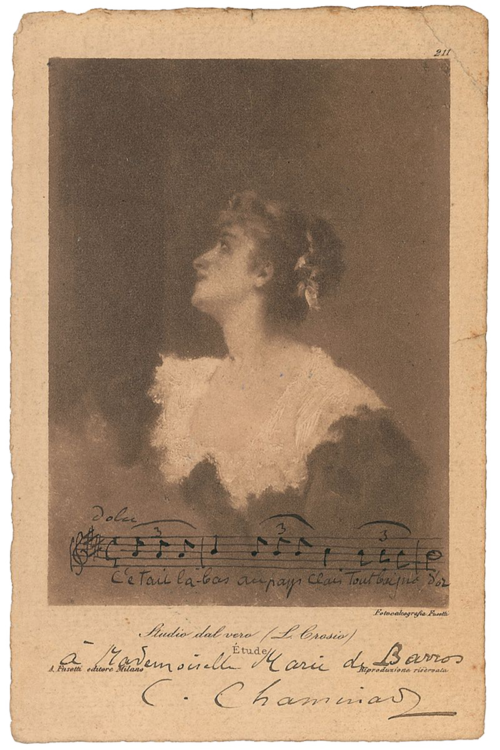
All the more remarkable was that Chaminade achieved her success as a woman in a man’s world. Ambroise Thomas, the French composer and writer, once felt obliged to say of Chaminade, “This is not a woman who composes, but a composer who is a woman.” In 1913, Chaminade was awarded the French Légion d’Honneur, a first for a female composer.
Chaminade slowly sank out of favor and into obscurity in the second half of the twentieth century. The 1980 edition of the New Grove Dictionary of Music devoted a single paragraph for her biography, and spoke dismissively of her: “Notwithstanding the real charm and clever writing of many of Chaminade’s pieces they do not rise above drawing-room music.”
The rise and fall of Cécile Chaminade makes me think of a plaque that adorns the wall of one of the Curtis Institute of Music’s teaching rooms. It proclaims self-importantly:
Life is short.
Art eternal.
Looking up at that pronouncement when I was a student at the school long ago, I said to myself: Ah, how profound. Nowadays, as a teacher in the same school some fifty years later, I occasionally come across the plaque, still installed imperiously on the very same wall, but now I regard it with some suspicion. Not the “life is short” part, mind you. Life is certainly short; but what about the following words? Is art really eternal? An asteroid could destroy our planet and the rest of the universe would never know or care about Wolfgang Amadeus Mozart’s Jupiter Symphony.
And then a foolish and unanswerable follow-up question: What actually is art? Andy Warhol, at least, had a solid take on the subject when he said, “What I like about art is that it’s also a man’s name.”
The true nature of art is a squishy thing. Were the large and devoted followers of Chaminade who flocked to her concerts when she toured the United States right in thinking that her music was great art? Or were the Grove Dictionary people right a half a century later in downgrading her music to mere “drawing-room” stuff.
That drawing-room comment bothers me more than a little. What’s so wrong with music played in a drawing room? You can play all kinds of music there: Beethoven’s Hammerklavier Piano Sonata or Schumann’s Dichterliebe song cycle or Bach’s Chaconne for solo violin. Not bad music.
But I know what the Grove people were getting at. Their gripe was not with the giant Beethovens, Schuberts, and Bachs of the world, but with a composer who chose to express herself in smaller and more intimate ways—a musical architect who built modest cottages rather than grand mansions.
I’m old enough to have had at least one foot in Chaminade’s era when her kind of musical sentiments were not only expressed freely but also welcomed with open arms and ears by the public. Even the greatest artists such as the cellist Pablo Casals, the violist William Primrose, and violinists Fritz Kreisler, Mischa Elman, and Jascha Heifetz often devoted an entire second half of their recital programs to these kind of miniatures that could elicit a wisp of a smile or a trace of a tear from the listener. For my generation of young musicians, there was no question that along with the concerto, sonata, and virtuoso repertoire, we had to learn many of these drawing-room or salon pieces—ice cream numbers as we students delighted in calling them.
The esteemed pianist Artur Schnabel once said that he only performed music better than it could be played. For this, I salute him and his great artistry. Never have I been more moved than by, say, Schnabel’s performance of the elegiac slow movement of Beethoven’s Sonata Opus 10, #3, or the opening of Schubert’s monumental posthumous Sonata in B Flat.
But didn’t Mr. Schnabel ever hanker for a taste of lemon soufflé after his meat and potatoes, an Italian cheesecake to counterbalance the linguini with clam sauce, or a dash of raspberry sorbet to wash down that dreamy turbot? Would it have hurt to include something a little lighter, a little more soufflé-like at the end of one of his programs?
The pianist Claude Frank, coincidentally a student of Artur Schnabel, had an eyebrow-raising difference of opinion with his teacher. He claimed that every work of music is equally difficult. “But Claude,” I sputtered when I heard this, “are you telling me that Beethoven’s Hammerklavier Sonata and his Für Elise are really of equal difficulty?” “Yes,” Claude insisted, “equally difficult, but in very different ways.”
Buried in Claude’s seemingly outrageous statement was at least a kernel of truth. Every work of music that is masterfully fashioned, large or small, grand or humble, demands an equally masterful performance.
In fashioning my own recital programs, I knew full well that there would be great challenges in bringing music of the great masters to life, but what about those “ice cream” numbers I occasionally chose for the second half? Playing ice cream would be as easy as eating it, yes? Actually, no. Capturing the sparkle and flirtatiousness of Victor Herbert’s A La Valse, the charm and gallantry of Fritz Kreisler’s Schön Rosmarin, or the incense-laden aura of Jules Massenet’s Meditation from Thaïs, proved elusive. I often struggled to be nimble enough for the quick changes of nuance and color that would bring these meticulously formed creations to life.
In 1984, pianist Virginia Eskin and I decided to make a record of women composers’ music for Northeastern records. Virginia suggested we consider music by Cécile Chaminade, a name I only vaguely recognized. In the forty years since she had died, fate had successfully snuffed out not only her fame but almost her very presence in the music world.
Virginia brought two works for us to consider: Romanza Appassionata, Opus 31, and Sérénade Espagnole as arranged by Fritz Kreisler for violin and piano. The music was beautifully crafted, full of charm, and with an almost feverish romanticism typical of its time. Chaminade’s heart-on-the-sleeve gestures, once so dear to people, were clearly out of synch with today’s tastes, and yet her music fairly leapt off the page with its vitality and imagination.
I loved working on Chaminade’s music, and specifically I loved the challenge of unlocking the Romanza’s ardor and the tenderness and poignancy of the Sérénade Espagnol. Would Artur Schnabel have considered this music worse rather than better than it could be played? If so, why were Virginia and I spending so much time trying to get each phrase, each change of color, just right?
Perhaps, Claude Frank was onto something after all: Every work of music is of equal difficulty.
Below is a link to our recording of Cécile Chaminade’s Romanza Appassionata and Sérénade Espagnol.
And Madame Chaminade, I wish you a most happy birthday.
Subscribe
Sign up to receive new stories straight to your inbox!




































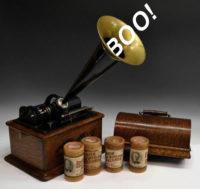
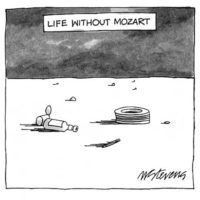



















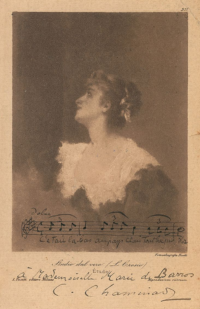




















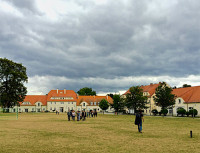
























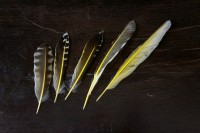

























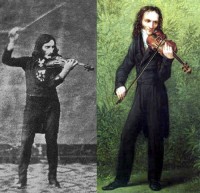





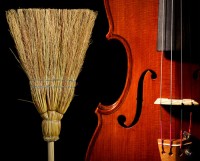





























Comments
How lovely! Thank you for this. I’ve been in love with you and your violin playing since you and the Guarneri Quartet were artists in residence at University of South Florida and I was a student, in 1974? 1975?
???
Arnold, I am grateful to you for giving this great performer and composer more much-deserved visibility. Regarding the perception of the “light-weightedness” of her music, I wonder if the readers have ever heard of a very lengthy and profound work of Chaminade’s–her Piano Sonata. It is in three movements, predictably filled with technical demands and evocative lyricism. But it is also a profound and sometimes tragic work in a minor key–a very powerful and consistently outstanding work in the tradition of 19th century sonata writing. What a pity that it is not more well-known and performed. Not to be self-aggrandizing, but here’s a link to a performance of mine in Sydney, Australia of this work in 2013, if any of the readers are interested (since there are practically none recorded). The intro starts at around 38:00 minutes into the recital. Thank you again for this much-deserved tribute to Chaminade.
What’s good is good and stands the test. In her case, the authenticity of the emotional content, the elegance of thought ensure her place in the lists. She belonged to the old school of performers who believed that a concert artist must also compose.
And let us remember that the way we play the “candy” is a supreme test of its own. No matter how technically difficult, it must appear to be played without effort, with sincere affect or with tongue in cheek. No one says it has to be on a par with the sonatas on the first half, but it is hard to dispute the artistry of truly well-executed Kreisler or Sarasate.
Scrumptious! One can live without dessert, but who would want to? You’ve reminded me to play through the Chaminade pieces in my library, and now we have IMSLP. I’ve always found her music appealing. Leonard Shure sometimes advised his piano students to prepare a one-page piece and play it exquisitely. There’s much to be learned and savored in these oft-neglected miniatures. Thank you!
As a former flutist, I shall always remember, if not love, Chaminade’s haunting Concertino for Flute and piano (or orchestra). According to Wikepedia, this piece is 85th on “hit” classical pieces in France!
What an exquisite performance! And a lovely article. Thank you. In her comment, Barbara Lister-Sink referred to the link to her performance of Chaminade’s Sonata. Barbara, where is the link?
Best,
Sophia Gilmson
Thanks so much, Arnold, for this delicious performance–just lovely! And would you believe, Aug. 8 is MY birthday, too.
Thanks to YouTube we can not only hear more of Mme. Chaminard’s music but can hear her in a 1901 recording (good quality too).
The style of playing is different to today – troppo dolce perhaps? One can hear this too in early recordings of violin music.
But we can’t claim tastes are necessarily better, only different.
Loved your performance! Thank you so much for taking time to write and teaching through the writing posts, I’m totally agree every piece is equally difficult.
Thank you for your beautiful performance and for your perspective on Cecile Chaminade. I am a flutist and therefore very familiar with what is likely her most often performed work, her Concertino, op. 107, for flute and piano. I heard one prominent university flute professor state that she would never allow her students to play this piece because it gives them a false sense of confidence as its sparkling runs and flourishes can be too easily executed. I remind my students that Chaminade had to resist her family in order to study music and become a composer. I will post your article outside of my studio door for my students to read and consider. Eileen Grycky
Great article and beautiful playing Arnold! I had the pleasure of playing one of her piano trios this summer at the Finger Lakes Chamber Music Festival. Wonderful touching base with you if only in the electronic ether… warmest regards, Peter
I laughed a lot at all your great humor in this blog Arnold!
Lovely to enjoy your yummy Chaminade as well.
Wonderful article and playing. I didn’t know her music at all and loved hearing your recording, played by both of you with the perfect blend of “Art” Schnabel and Schmaltz. All kidding aside, it’s a beautiful performance Also loved your latest blog about Chestnuts Roasting on an Open Fire. Very funny that they wrote it in the summer! Happy Holidays and New Year to you and your family.
best,
Phil
One of the pieces that I played for my audition at Crane School of Music back in 1974 was Cecile Chaminade’s Op.35, No.2 “Automne.” It is beautiful and helped me secure admission to the school. It is still one of my most favorite pieces. And I love “Scarf Dance” too, for that tasty bit of ice cream! Honestly, there isn’t a Chaminade piece that I don’t love.
Leave a Comment
*/